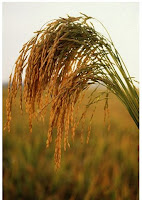The mudskipper lives on mud flats and mangrove swamps in many parts of West Africa to South east Asia and the South western Pacific. They spend much of their time out of water. But they have to return constantly to the pools, left by the tide. They can breathe air through the membranes lining the back of the mouth and the throat, which are supplied with blood vessels.
In the Malayan mudskipper (Periophthalmus chrysopilos) the pelvic fins have moved anterior to the pectoral fins and joined to form a sucker which enables them to climb vertical trunks of mangroves! This fish is also called “climbing perch”.
There is one group of fresh water fishes that do beat their fins to achieve true flight through the air. These are the hatchet fishes of northern South America found from the River Plate to Panama! The fresh water butterfly fish (Pantodon buchholzi) is capable of leaping out of water for a distance of 6 feet or more.
The freshwater Bichir fish (Polypterus bichir), about two feet long, living in the Upper Nile, is a strange one. It not only breaths air, but also uses its front fins like legs. It has gills in addition to the lung like swim bladder. Yet if denied air for even short time it dies! To take air it swims slowly to the surface, takes a quick gulp, then rapidly swims down to the bottom!
Any one trabvelling in ship in Bay of Bengal must certainly have seen fishes leaping into the air in groups in al directions. They are called Parava in Malayalam and are often described as “blue birds of the sea”. Their wings are pectoral fins, spread while the fish is in the air. Before take off, the tail is whipped up rapidly to drive the fish out of water. They does not fly but glides on the fins extended like wings. This is a method of escaping from enemies. There are three varieties that are usually gathered by fishermen for use (Cypsilurus coromandelensis, C.spilopterus, C.habiensis).
There are over 43 species of flying fish, world wide.
The History of Tapioca
What are ice ages
How do seeds germinate?
How did plants originate





